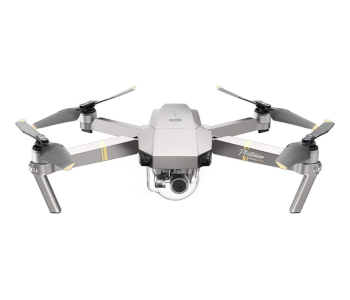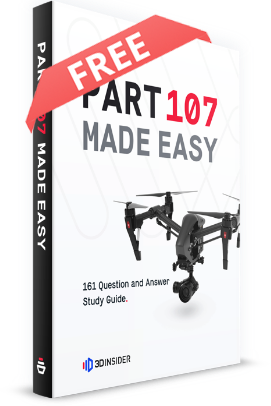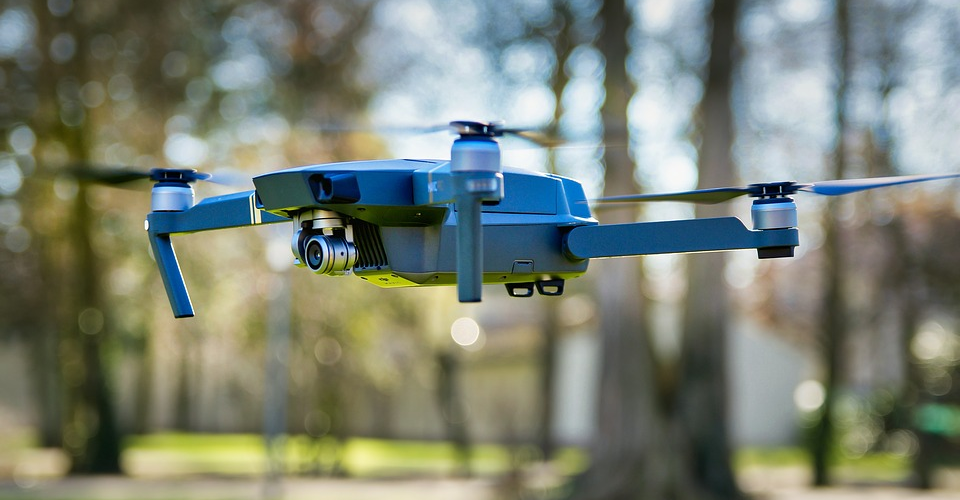When is Part 107 Required?
The Part 107 regulations were implemented by the FAA in 2016 with the hopes of standardizing the commercial drone industry. Since then, hundreds of thousands of drone pilots have become Part 107-licensed drone pilots. Although having a Part 107 license looks great on paper, it can also feel restrictive at certain times. This feeling of restriction has led to many drone pilots questioning if they even want to get a Part 107 license. When is it necessary to fly under Part 107 rules? Do I need to follow the Part 107 rules if I’m just flying for fun?
When do I need to get a Part 107 license?

A Part 107 license is required for any type of commercial drone application. This could be as simple as offering photography or filmmaking services that use drones or selling of photos that were captured using drones. This also includes the use of drones as a means to support a business, such as drone-based farm surveys of surveillance of construction sites. Lately, the idea of drone-based parcel delivery has been explored by retail giants such as Amazon, although it’s still a long way from actual implementation.

PART 107 Made Easy
- 161 Question and Answer Study Guide
- 105 pages of illustrated content
- Covers all parts of the Part 107 test
- $97 of value for free
What if I’m flying just for fun?
Hobbyist drone pilots are not subjected to the Part 107 rules, which means they are less restricted and do not have to abide by documentation requirements. However, can Part 107-licensed drone pilots fly under hobbyist rules? Yes, they can, as long as they are not flying the drone with any commercial intent.
This establishment of “intent” leaves a little bit of room for interpretation. It also makes it very easy to overstep the boundaries of recreational flight. Technically, the intention of the drone flight has to be established at take-off. This means that you have to decide at take-off if you will be flying under Part 107 rules or not. With this in mind, there are a couple of tricky scenarios that you would want to avoid:
- Starting a commercial gig in the morning and extending to the night in the guise of flying for fun
- Taking drone photos at night for personal or recreational use and then deciding to sell them when an interested buyer approaches you
- Taking drone photos for fun and then posting them on a commercial photography site or to advertise a business
Take note that you do not even need to get paid for a drone photo for it to be considered a product of a commercial drone flight. Your drone shot may end up being used by a publication or an online news site, which could land you in trouble even without you knowing it.
What are the rules under Part 107?
Commercial drone flight under Part 107 rules is subject to a whole shopping list of flight restrictions which is the major reason why drone pilots appreciate the flexibility of flying under hobbyist rules. However, if they are doing drone-based gigs, they have no choice but to follow the following restrictions, among others:
- A drone can only fly at a maximum ground speed of 100 mph.
- A drone can only fly at a maximum altitude of 400 feet, except when flying within 400 feet of a structure.
- A single drone pilot cannot fly more than one drone.
- A drone cannot be operated beyond the visual line-of-sight (VLOS) of the drone pilot or an accompanying visual observer.
- Drone flight is only allowed during daytime or on twilight with appropriate anti-collisions lighting setup.
- A drone cannot be operated from a moving vehicle.
- Drone flight is not allowed over people who are not participating in the activity.
- Drone flight in class B, C, D, and E airspace can only proceed upon the permission of local air traffic control.
Aside from the restrictions, a Part 107-licensed drone pilot is also required to maintain regular logs of their drone flight activities. These logs should contain details on the dates and times of flight, pre-flight inspection, any issues encountered, and other relevant notes. A licensed drone pilot also needs to report a drone-related accident to the FAA within ten calendar days of the event if the accident resulted in serious personal injury or property damage.
The FAA recognizes that the Part 107 restrictions may inhibit commercial drone pilots from carrying out particular drone-based jobs, such as covering events at nighttime. For this reason, the FAA grants waivers to some of these restrictions, subject to approval after the drone pilot submits a detailed waiver application. Processing a waiver request can take up to 90 days depending on the complexity of the request, so you’ll need to prepare way ahead of time.
If I’m just flying for fun, are there rules that I still need to follow?
There are still a couple of rules that you need to follow even if you’re just flying a drone for fun. As noted in the FAA website, a recreational drone pilot is subject to the Special Rule for Model Aircraft (Public Law 112-95 Section 336), which has the following restrictions:
- Fly for hobby or recreational purposes only
- Follow a community-based set of guidelines
- Fly the UAS within VLOS
- Yield airspace to manned aircraft
- Provide prior notification to air traffic control if flying within 5 miles of an airport
- Fly UAS that weigh no more than 55 lbs.
The restrictions for hobby pilots are pretty much covered by the Part 107 restrictions, although the Part 107 rules are considerably more restrictive. One advantage of flying under Part 107 rules is that there is no need to notify air traffic control when flying in Class G airspace, or the airspace within 5 miles of an airport.
The 2nd item states the need to follow a “community-based set of guidelines.” For recreational drone pilots, the relevant community that this rule refers to is the Academy for Model Aeronautics (AMA), which is the national body for model aviation. The AMA has its own set of safety guidelines that recreational drone pilots need to abide with, although these are still not as restrictive as the Part 107 rules.
- A pilot should not fly in a careless or reckless manner.
- A pilot will not operate a model aircraft when under the influence of alcohol or any drug that can adversely affect their ability to fly.
- A pilot will avoid flying directly over people, moving vehicles, or occupied structures.
- A pilot will maintain visual contact with the aircraft at all times.
- A pilot can only fly at night with the appropriate lighting system.
As you’ll notice, this set of safety guidelines is still fairly consistent with the Part 107 and Section 336 rules. However, the AMA rules allow for flight at night without any need for a waiver approval process, as long as the drone is equipped with a lighting system that enhances its visibility and attitude orientation. This is the biggest benefit of flying under hobby rules, especially when you consider that more than 90% of the waiver applications received by the FAA is for flight at night.
Final thoughts
The restrictive nature of the Part 107 rules is the major gripe of commercial drone pilots when it comes to complying with FAA requirements. The good news is that the FAA has been quite receptive to feedback from drone pilots and have proposed changes that should relax the Part 107 restrictions, particularly regarding flight at night and over people. Although these relaxed rules are probably still a long way from implementation, they should come as a welcome change for all commercial drone pilots.
Fortunately, even Part 107-licensed drone pilots have the freedom to switch back and forth between commercial and recreational drone flight rules. Drone pilots should still be careful, as it’s easy to fall into a tricky scenario that will have them violate one or several Part 107 rules. The key is to establish the intent at take-off and to stick to it, taking care that any drone photos or videos captured in a recreational drone flight don’t end up getting sold or unwittingly used for commercial purposes.


